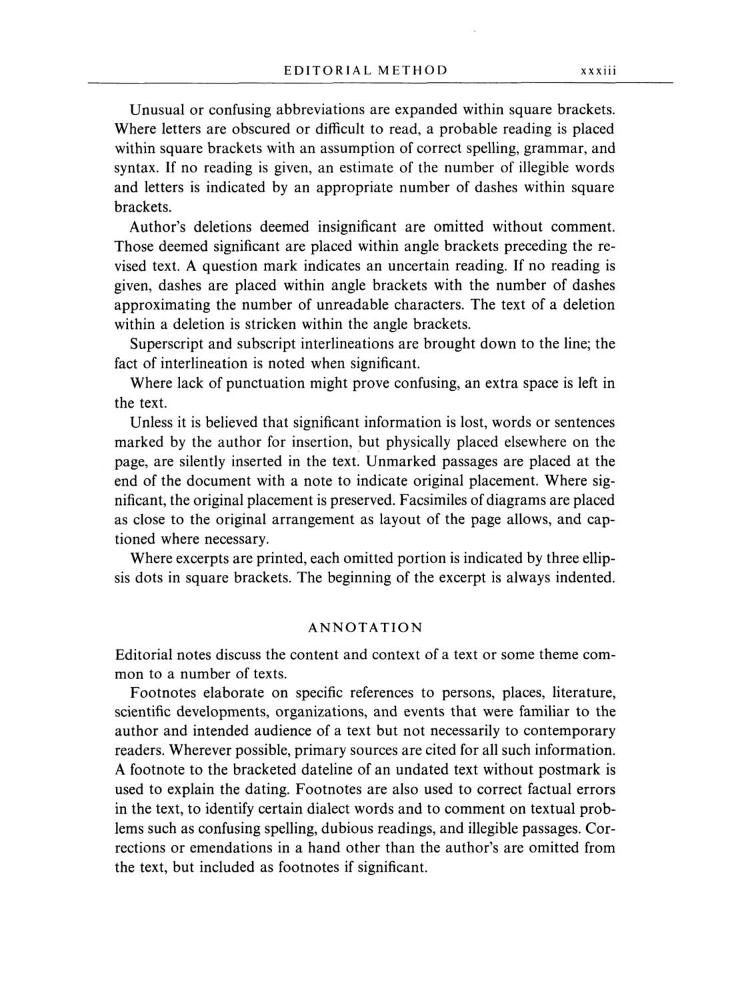EDITORIAL METHOD xxxiii Unusual or confusing abbreviations are expanded within square brackets. Where letters are obscured or difficult to read, a probable reading is placed within square brackets with an assumption of correct spelling, grammar, and syntax. If no reading is given, an estimate of the number of illegible words and letters is indicated by an appropriate number of dashes within square brackets. Author's deletions deemed insignificant are omitted without comment. Those deemed significant are placed within angle brackets preceding the re- vised text. A question mark indicates an uncertain reading. If no reading is given, dashes are placed within angle brackets with the number of dashes approximating the number of unreadable characters. The text of a deletion within a deletion is stricken within the angle brackets. Superscript and subscript interlineations are brought down to the line the fact of interlineation is noted when significant. Where lack of punctuation might prove confusing, an extra space is left in the text. Unless it is believed that significant information is lost, words or sentences marked by the author for insertion, but physically placed elsewhere on the page, are silently inserted in the text. Unmarked passages are placed at the end of the document with a note to indicate original placement. Where sig- nificant, the original placement is preserved. Facsimiles of diagrams are placed as close to the original arrangement as layout of the page allows, and cap- tioned where necessary. Where excerpts are printed, each omitted portion is indicated by three ellip- sis dots in square brackets. The beginning of the excerpt is always indented. ANNOTATION Editorial notes discuss the content and context of a text or some theme com- mon to a number of texts. Footnotes elaborate on specific references to persons, places, literature, scientific developments, organizations, and events that were familiar to the author and intended audience of a text but not necessarily to contemporary readers. Wherever possible, primary sources are cited for all such information. A footnote to the bracketed dateline of an undated text without postmark is used to explain the dating. Footnotes are also used to correct factual errors in the text, to identify certain dialect words and to comment on textual prob- lems such as confusing spelling, dubious readings, and illegible passages. Cor- rections or emendations in a hand other than the author's are omitted from the text, but included as footnotes if significant.
